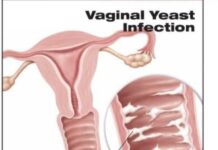Tetanus in Nigeria. Tetanus is spasms caused by the presence of bacteria toxins in the nervous system. It is an acute, often fatal disease caused by an exotoxin produced by the bacterium Clostridium tetani. It is not a true infection of the central nervous system.
EPIDEMIOLOGY OF TETANUS
With over 300,000 cases reported annually, tetanus is a worldwide disease, though, it has almost been eradicated in developed countries. The incidence and prevalence rate is still high in developing countries like Nigeria, Chad, Niger Republic, Ghana, Pakistan, India etc. due to ignorance, poverty, low immunization coverage and way of life(culture).
Neonatal tetanus remains a significant health problem in developing worlds but now on a downward trend because of increased awareness and vaccination rates.
MICROBIOLOGY OF CAUSATIVE ORGANISM OF TETANUS
The causative organism of tetanus is Clostridium tetani. The organism is ubiquitous. Its natural habitat is dung of ruminants especially cow dung but can also be seen in soil, dust, instruments, surfaces etc.
It is a gram-positive rod, non-motile, an obligate(strict) anaerobe, and it exists in two forms:
- Spores
- Vegetative forms
The spores are highly resistant and can survive in the harshest of condition. They cannot be killed by boiling but by autoclaving at 121 Celsius. The vegetative form is what causes the disease.
CAUSES OF TETANUS
The causes of tetanus, /mode of entry/ mode of transmission of the bacteria is through the following:
- Puncture wound or lacerations
- Obstetric delivery
- Surgery
- Dental extraction
- Dental caries
- Otitis media
- Scarification marks
- Umbilical cord contamination (neonatal tetanus)
- Decubitus ulcers
- Injection sites (intravenous drug abusers)
- Bites e.g. from snakes, dogs, cats
- Burns
- Ear piecing
- Circumcision
- Bullet wounds
- Harmful traditional practices can also cause lockjaw

PATHOGENESIS OF TETANUS
Clostridium tetani enters the body through a wound. It produces 2 exotoxins-tetanolysin and tetanospasmin. Tetanolysin makes the area suitable for infection.
It destroys red blood cells causing necrosis, making the environment necrotic and anaerobic. Tetanospasmin is a neurotoxin that causes the clinical features of tetanus.
The tetanospasmin is picked up by the axons at the neuromuscular junction and transported in a retrograde fashion towards the neural cell body in the spinal cord.
Then it passes tran-synaptically to be taken up by the nerve terminals of predominantly inhibitory glycine and GABA neurons.
Tetanospasmin then inhibits the inhibitory neurons leading to firing and uncontrolled muscle spasm.
Once the toxin is bound to the neurons its effect cannot be reversed by antibodies.
SYMPTOMS OF TETANUS
The symptoms and signs (clinical features) of tetanus exists in 3 forms clinically;
- Cephalic especially from otitis media
- Local
- Generalized tetanus is the commonest
- A wound site may or may not be present when the signs and symptoms manifests.
- The incubation period is 3-21 days. The incubation period is the time between when the individual sustained the injury to the time of the appearance of the first symptom which is trismus (lockjaw). Lockjaw jaw is caused by spasm of the masseter muscles which are affected first.
- The onset time is the period between trismus and the first spasm.
- Early symptoms include irritability, headaches, restlessness and low –grade fever.
- Later spasms start
- Patients and conscious and mentally alert
- They develop stiffness and rigidity in the jaw(lockjaw), back (opisthotonus), and facial muscles (risus sardonicus).
- Reflex muscle spasms develop and are triggered by noise, lights, movements or emotions. This is characterized by painful spasms involving the limbs, abdomen, and respiratory muscles.
- Autonomic dysfunction symptoms eg. Tachycardia, labile blood pressure, excessive sweating and fever.
- Other manifestations include arching posture of the back (opisthotonus), laryngospasm and dysphagia (difficulty in swallowing).
DIAGNOSIS OF TETANUS
The diagnosis is clinical. It is made from good history taking and clinical evaluation.
DIFFERENTIAL DIAGNOSIS OF TETANUS
Other medical conditions that may have similar signs and symptoms of lockjaw include:
- hypocalcemic tetany
- Strychnine poisoning
- meningitis
- encephalitis
- acute abdomen
- acute dystonic crisis from neuroleptics and anti-emetics
- status epilepticus
- Dental abscess
- Stiff-person syndrome recently diagnosed in music icon Celine Dion
TREATMENT OF TETANUS
The treatment of tetanus involves laid down principles of management which must be strictly followed to achieve desired results. They are:
Control spasm: (A) diazepam is the first line drug. The ceiling dose must not be exceeded because of the side effect of respiratory depression. Precaution while taking diazepam include:
- Priming the tubing to allow it run in the tubes before administration because it tends to adhere to tubing and decrease the actual dose administered.
- It is photodegradable, thus is given 2hourly.
Diazepam is given in intravenous infusion, to prevent photodegradation.
If the seizures continue while the patient is on diazepam infusion (breakthrough seizures), diazepam is administered IV push while still running the infusion.
(B) Phenobarbital can also be used. A loading dose is given first.
- Neutralize circulating toxins:
- human tetanus immunoglobulin (HTIG) is given IM (300-600units).
- give booster tetanus toxoid immunization. Give when patient is recovering to prevent against re-infection.
- Wound debridement and irrigation with tertiary hydrogen peroxide
- Eradicate the organism: administer metronidazole to mop up the anaerobes or crystalline penicillin at 1000iu/kg/day. Penicillin may cause pain which may trigger the spasm.
- Fluid maintenance: this is important because patients cannot feed properly. Give enough glucose containing fluids to flush the kidneys and prevent acute renal failure. Strict fluid input and output monitoring.
- Adequate nutrition
- Treat secondary infections
- Protect the airway
- Good nursing care – suction when necessary.
- Admit into an intensive care unit- isolation in a quiet, dark room to minimize stimulation if critical
- Generalized, severe tetanus may necessitate endotracheal intubation/tracheostomy because of laryngospasm or respiratory embarrassment.
- Supportive care: adequate nutrition, prevention of stress ulcers, deep vein thrombosis and decubitus ulcers, nil per oral(NPO) to prevent aspiration, 10% dextrose infusion, set up a spasm chart.
COMPLICATIONS OF TETANUS
- Aspiration pneumonitis
- Autostatic pneumonia
- Fracture of long bones
- Laryngospasm
- Renal failure due to the rapid muscle breakdown and myoglobin toxicity
- Urinary tract infection
- Herculean gait because of the stiff muscles
PROGNOSIS OF TETANUS
The bad prognostic factors include:
- The closer the portal of entry to the central nervous system
- The shorter the incubation period the worse the prognosis
- The shorter the onset time the worse the prognosis
- The longer the duration of spasm
- Unprovoked spasm
- Autonomic dysfunction worsens the prognosis
PREVENTION OF TETANUS IN NIGERIA
Lockjaw survivors cannot have life-long immunity after the first infection because the inoculum which causes the clinical features is not enough to cause elicit an immunologic reaction. So, immunization is the only form of prevention. Immunization of infants and children with PENTAVALENT vaccine is recommended at 6, 10 and 14 weeks respectively; then 4-6 years. Thereafter, a booster dose is given every 10 years. Tetanus toxoid vaccine is given to women of reproductive age or pregnant women.
























You are doing a great job bro.
Every Nigerian and health professional should read this.
thank you
Good one,well done